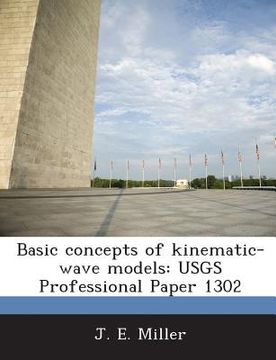Share
Basic Concepts of Kinematic-Wave Models: Usgs Professional Paper 1302 (in English)
J. E. Miller
(Author)
·
Bibliogov
· Paperback
Basic Concepts of Kinematic-Wave Models: Usgs Professional Paper 1302 (in English) - Miller, J. E.
$ 13.26
$ 15.75
You save: $ 2.49
Choose the list to add your product or create one New List
✓ Product added successfully to the Wishlist.
Go to My WishlistsIt will be shipped from our warehouse between
Friday, June 28 and
Monday, July 01.
You will receive it anywhere in United States between 1 and 3 business days after shipment.
Synopsis "Basic Concepts of Kinematic-Wave Models: Usgs Professional Paper 1302 (in English)"
The kinematic-wave model is one of a number of approximations of the dynamic-wave model. The dynamic-wave model describes one-dimensional shallow-water waves (unsteady, gradually varied, open-channel flow). The report provides a basic reference on the theory and application of kinematic-wave models and describes the limitations of the model in relation to the other approximations of the dynamic-wave model. In the kinematic-wave approximation, a number of the terms in the equation of motion are assumed to be insignificant. The equation of motion is replaced by an equation describing uniform flow. Thus, the kinematic-wave model is described by the continuity equation and a uniform flow equation such as the well-known Chezy or Manning formulas. Kinematic-wave models are applicable to overland flow where lateral inflow is continuously added and is a large part of the total flow. For channel-routing applications, the kinematic-wave model always predicts a steeper wave with less dispersion and attenuation than actually occurs. The effect of the accumulation of errors in the kinematic-wave model shows that the approximations made in the development of the kinematic-wave equations are not generally justified for most channel-routing applications. Modified flow-routing models can be used which help to stop the accumulation of error that occurs when the kinematic-wave model is applied.
- 0% (0)
- 0% (0)
- 0% (0)
- 0% (0)
- 0% (0)
All books in our catalog are Original.
The book is written in English.
The binding of this edition is Paperback.
✓ Producto agregado correctamente al carro, Ir a Pagar.

